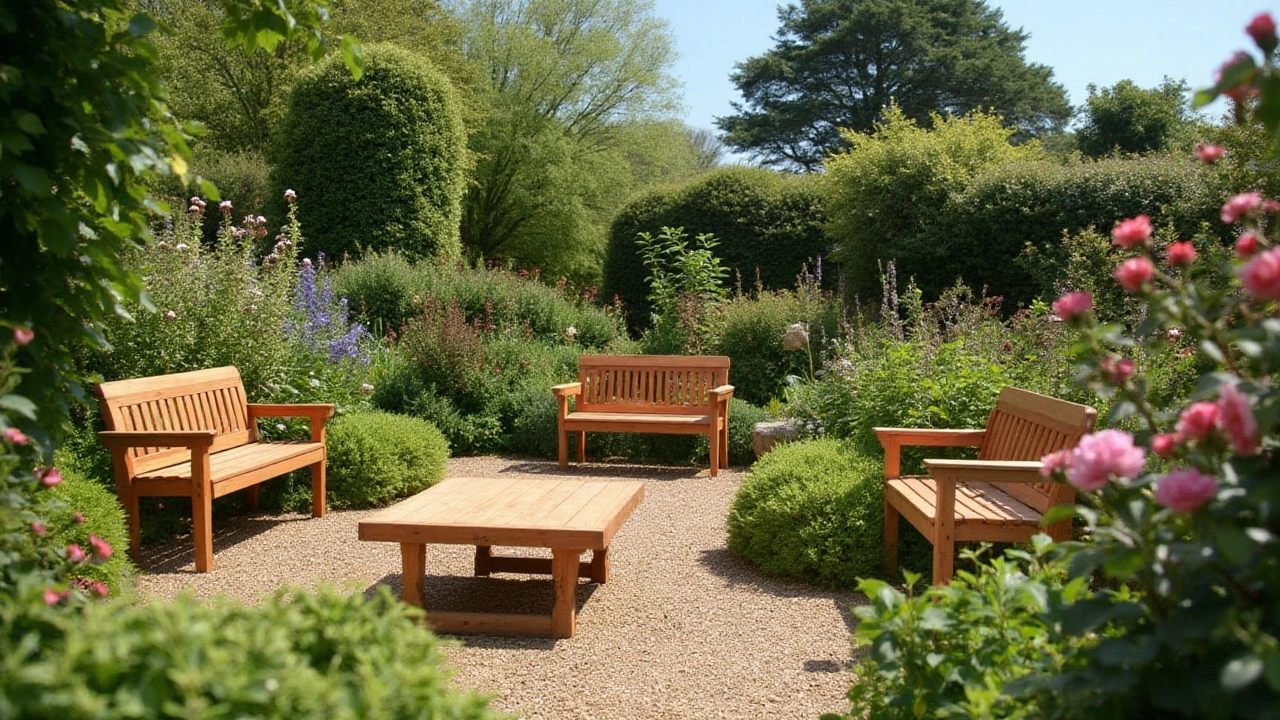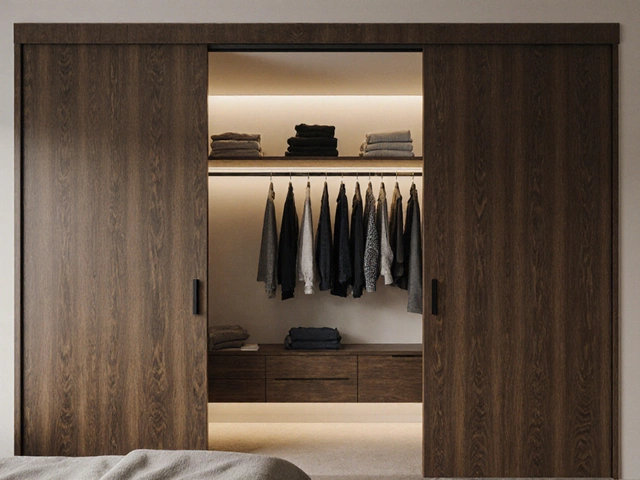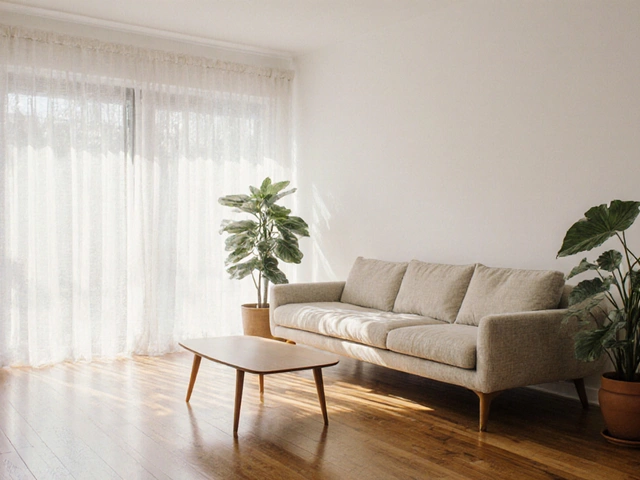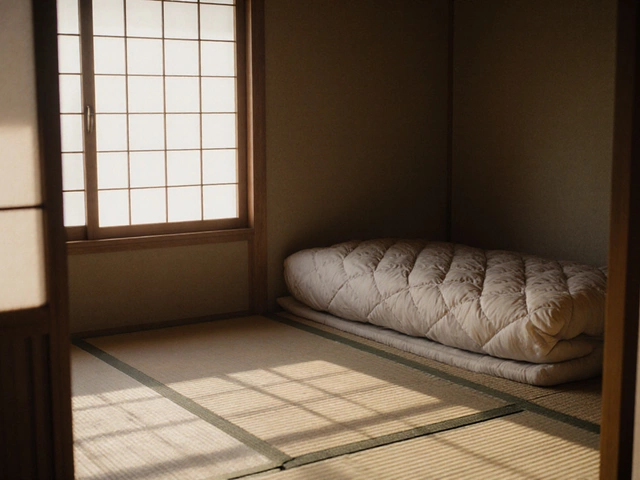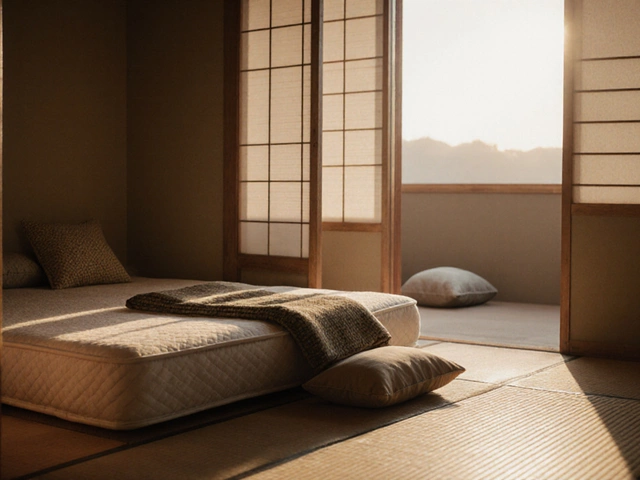When it comes to garden furniture, one of the biggest decisions revolves around the type of wood you choose. Nobody wants to invest time and money into furniture that won't stand the test of time, especially when subjected to the whims of nature. A careful selection can mean the difference between a structure that falls apart within a couple of years and one that provides comfort and beauty for decades.
From the golden hues of teak to the rustic charm of cedar, each wood type has its own set of characteristics that make it ideal—or not—for outdoor use. Understanding these differences can help you make a smart choice that suits your needs and aesthetics. After all, your garden should be more than just a place to relax; it should be a sanctuary that evolves and endures along with you.
- Why Wood Selection Matters
- Teak: The Undisputed Champion
- Cedar: The Aromatic Resister
- Mahogany: The Elegant Choice
- Pine: An Affordable Option
- Maintenance Tips for Longevity
Why Wood Selection Matters
As anyone who has ever invested in garden furniture knows, selecting the right type of wood can be crucial for both practical and aesthetic reasons. It's not just about how the wood looks today, but how it will fare through seasons of sun, rain, and snow. Outdoor wood that can withstand the elements requires particular attributes, such as density, natural oils, and grain patterns. The choices are vast, and what works splendidly for one outdoor setting might not be ideal for another. The goal is to find that perfect balance of durability, cost, and style, which involves understanding the key differences between various types of wood. For instance, a heavier wood like teak might be perfect for a sturdy table, while a lighter wood like cedar could be better suited for decorative elements.
One of the first things to consider is how a specific type of wood reacts to moisture. Rot and decay are the most common threats to garden furniture. Certain woods are naturally resistant to these thanks to their high oil content and tight grain. This means you can leave that teak chair in the garden without worrying too much about the weather. On the other hand, softwoods like pine can be treated with preservatives to improve their resilience, but they rarely match the longevity of more naturally durable types. Another factor to consider is the effect of sunlight. Even the sturdiest wood can succumb to the sun's harsh rays, leading to fading and cracking. This is something many people fail to take into account until it's too late.
"The right wood not only enhances the visual appeal of your space but also ensures that your furniture remains functional and reliable," says Jane Peterson, a well-known landscape designer. "It's about crafting a setting that suits its context without compromising on longevity."The financial aspect should not be overlooked either. While it might be tempting to scrimp on materials, lower initial costs can lead to higher maintenance and replacement costs down the line. There's also environmental sustainability to consider. Some woods are harvested in a way that is more environmentally friendly than others. This is becoming a bigger concern for environmentally conscious consumers who want their outdoor spaces to harmonize with nature, not destroy it.
Finally, the selection of wood also affects the maintenance routine you will have to adopt. Woods like teak, which are rich in natural oils, require minimal effort to keep looking great. Others might need regular sealing or staining to maintain their appearance and protect them from the elements. Therefore, choosing the right wood can significantly reduce the time and resources you devote to maintenance, allowing you to spend more time enjoying your garden oasis. Whether it's through diligent care or selecting materials with inherent resilience, understanding the nuances of wood can transform a simple garden into an enduring retreat.
Teak: The Undisputed Champion
Teak is heralded as the king of outdoor wood for very compelling reasons, and it's not just its golden-brown hue that captivates onlookers. Native to Southeast Asia, teak wood is known for its incredible durability and ability to withstand the elements. Its natural oils act as a self-preserving coating, making it resistant not only to rain but also to pests and decay. In fact, ships constructed from teak hundreds of years ago can still be found intact, showcasing its resistance to moisture and harsh conditions. This self-sealing characteristic means it requires considerably less maintenance than many of its counterparts.
A key component of teak's resilience lies in its high tensile strength and moderate hardness. It balances flexibility with robustness, which is ideal for withstanding the varying impacts of environmental changes. The silica content within the wood also contributes to its wear-resistant nature, allowing garden furniture made from teak to maintain its surface texture and form even after long exposure to outdoor environments. Moreover, teak's grain is interlocked, which helps prevent warping and movement.
"Teak wood, with its unparalleled strengths and aesthetic appeal, reigns supreme among outdoor materials," notes renowned landscape designer Miranda Grayson.
This remarkable wood has earned its popularity not just through hearsay but through long-standing customer satisfaction and empirical evidence. According to a study on outdoor furniture longevity, teak consistently outperforms other garden furniture materials, demonstrating a lifespan that exceeds 50 years with proper care. It’s more than just a piece of furniture; it’s an investment. The rich, warm tones of teak can be left to weather into a beautiful silvery-gray patina or preserved in its warm state with regular oiling, depending on personal preference.
Despite its many virtues, teak does come at a price. Its superior quality and almost unnaturally long lifespan often mean a higher initial investment compared to other woods. However, taking the long view, the cost is justified by the savings in replacement and repair. Sourcing responsibly is also key, as illegally harvested wood has become a concern. When buying teak, look for certifications like the Forest Stewardship Council (FSC) which ensures the wood is sourced sustainably. In summary, while the initial cost may spark a pause, the long-term benefits, resilience, and beauty make teak an unbeatable choice for any outdoor setting.
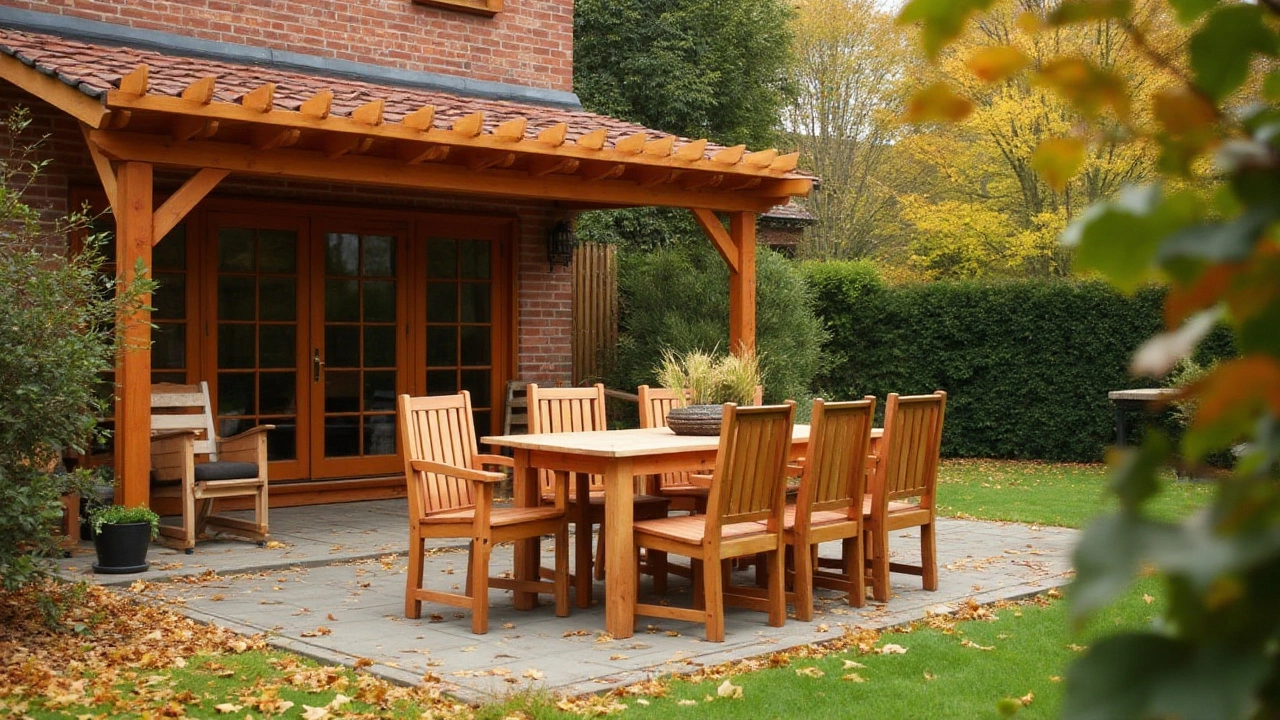
Cedar: The Aromatic Resister
Cedar is often heralded as one of nature’s marvels when it comes to outdoor wood selection. It's not just the lovely aromatic scent that makes cedar stand out; its durability in resisting weathering is nearly legendary. This wood is naturally imbued with oils that fend off insects and mildew, which gives it a unique ability to endure in the harsher climates. It's remarkable how a tree that grows so abundantly is equipped with these inherent protective features, as if designed specifically for nature's battlegrounds.
When choosing cedar for garden furniture, it's important to recognize that there are several types, with Western Red Cedar being among the most popular. Its natural beauty is stunning, with a color palette that ranges from soft amber to deep sienna, accompanied by a distinctive grain pattern that almost dances in the sunlight. From Adirondack chairs to stylish tables, cedar's versatility makes it a go-to choice for those seeking aesthetics and reliability in tandem.
"Cedar is arguably one of the best woods for outdoor strong and resilient to decay," says James White, a renowned horticulturist and author of 'Nature’s Gifts'.
What might surprise some is cedar's incredible dimensional stability. This means it resists warping and splitting far better than many other woods, making it an excellent choice for environments with varying weather conditions. Homeowners and furniture makers alike adore its capacity to retain shape and function despite the ebb and flow of nature's caprices. While it’s not completely maintenance-free, caring for cedar typically involves minimal effort: a quick annual cleaning with mild soap and water often suffices to preserve its captivating appearance.
A curious fact about cedar is its ability to improve its own atmosphere. Its aromatic oils not only repel pests but provide a pleasant, refreshing scent that transforms any garden space into a fragrant paradise. This unique feature of cedar makes it advantageous not only for durable wood construction but also as a natural deodorizer. Imagine the gentle aroma wafting through your garden, offering serenity and peace after a long day, enticing you to relax and unwind.
While its cost may be slightly higher than more common alternatives like pine, cedar’s benefits justify the investment for those who value durability and minimal upkeep. Cedar is a testament to how choosing the right material can harmonize function with nature, providing not just furniture but a legacy in your outdoor sanctuary.
Mahogany: The Elegant Choice
Mahogany stands out among woods for its timeless elegance and versatility, making it a popular choice for outdoor garden furniture. Known for its rich, reddish-brown color that deepens beautifully over time, mahogany brings a classic sophistication to any outdoor setting. The durability and natural resistance to decay and insects make it an ideal candidate for areas subjected to the elements. Its fine grain allows for a smooth finish, making it aesthetically appealing and pleasing to touch, an important trait for garden furniture you might use daily.
The origin of mahogany wood is predominantly from Central and South America, where the climate imparts unique characteristics to the lumber – an intrinsic strength and density that translates to unmatched durability in outdoor environments. Historically, it was the wood of choice for boat building due to these attributes, as it withstands water exposure excellently. As stated by a renowned garden designer, “Mahogany's resilience under all weather conditions makes it a lasting investment for garden furniture.”
One fascinating aspect of mahogany is its workability. This means it can be crafted into intricate designs without compromising structural integrity, adding an element of artistry and luxury to any piece. Such workability also simplifies repairs and refinishing, extending its lifespan and maintaining its luxurious appeal. Despite its many advantages, mahogany requires care to sustain its appearance and performance. Regular applications of oil can enhance its natural color and protect against fading, while periodic cleaning with mild soap and water maintains its pristine finish.
While it's true that mahogany is generally more expensive than other types of wood, its superior characteristics often justify the cost for those seeking longevity and elegance. A quick glance at pricing can reveal a significant difference, but this is overshadowed by the savings in maintenance and replacements in the long run. As a reminder of its premium status and wide appeal, numerous prestigious establishments incorporate mahogany in their furniture not just for its durability but also for the plush ambiance it creates.
The sustainability aspect of mahogany is worth noting, as it is crucial to source it responsibly to prevent deforestation. Many suppliers now offer sustainably harvested mahogany, certified by organizations dedicated to conservation. This ensures that while you enjoy the beauty and strength of mahogany, you are also contributing to the planet's ecological balance. Investing in responsibly sourced wood supports the healthy management of forests and communities that depend on them.
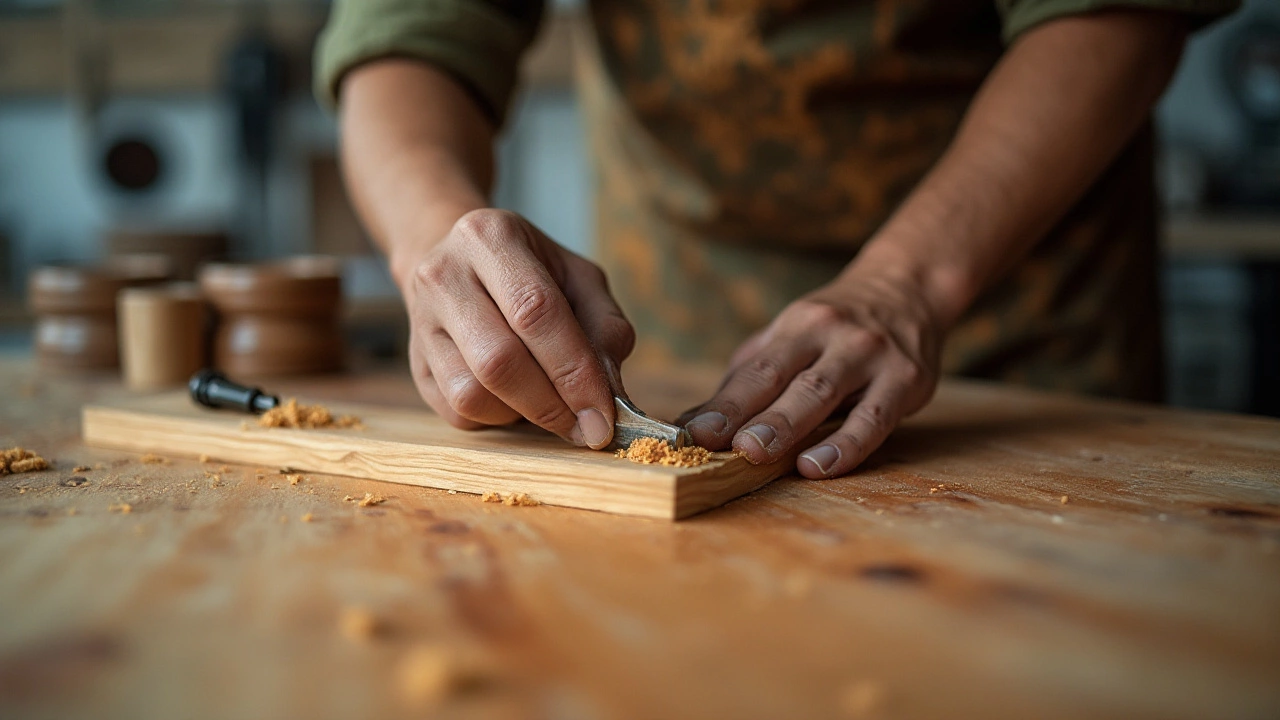
Pine: An Affordable Option
Pine is often regarded as the everyman's wood when it comes to outdoor furniture, thanks to its accessibility and reasonable price point. Many DIY enthusiasts and budget-conscious homeowners opt for pine because it strikes the perfect balance between cost and functionality. While it may not be the heftiest option on the market, pine possesses a magical quality of being both lightweight and sturdy when treated correctly.
Pine is typically fast-growing, which contributes to its affordability. Unlike its more expensive counterparts, like teak or mahogany, pine trees mature much quicker, allowing for sustainable harvesting practices. This makes it a popular choice for those looking to reduce their environmental footprint. In the realm of aesthetics, pine displays an attractive light color, often tinged with a delightful golden hue, giving it a warm and inviting appearance.
One fascinating aspect of pine is its responsiveness to treatment; it eagerly absorbs stains and finishes, allowing homeowners the creative freedom to customize their furniture's look. Whether you favor a rich mahogany stain or a sleek, painted finish, pine gracefully adapts to your vision. However, there's a caveat—the same absorbent quality that makes pine versatile also renders it vulnerable to the elements if left untreated. Sealing the wood with a high-quality outdoor finish is an absolute must.
Beth Gardiner from Woodcraft Digest once observed, "Pine lends a certain rustic charm that feels effortlessly inviting, especially in outdoor settings where a relaxed ambiance is key."
Another noteworthy feature is pine's workability. Its soft texture allows intricate carvings and details that make each piece unique. This property is particularly valued by craftsmen and hobbyists who enjoy adding a personalized touch to their creations. Despite being a softer wood, pine holds its own against wear and tear when adequately maintained. To protect your investment, remember to refresh the sealant every couple of years.
If you’re considering pine for your garden furniture, it’s important to weigh its pros and cons. While the initial purchase might be light on your wallet, oversight in maintenance could lead to premature aging. For optimal results, store furniture during harsh weather and provide regular care. By understanding the strengths and weaknesses of pine, you can keep this affordable option beautiful and long-lasting in your garden setting.
Maintenance Tips for Longevity
Keeping your outdoor wood in pristine condition requires a bit of know-how and effort. While it may seem daunting at first glance, maintaining your garden furniture can become second nature with a few simple practices. The key lies in understanding the specific requirements of the wood type you've chosen. For example, treating teak regularly with a specially formulated oil helps preserve its natural oils, keeping the wood looking rich and warm. Cedar benefits from an occasional wash and a coat of protective sealant to maintain its natural defenses against insects and decay. The time you invest in care will pay off in furniture that not only lasts but looks great doing so.
Humidity and sunlight are two of the biggest challenges to durable wood. A simple way to combat these elements is to position your furniture under tree canopies or patio umbrellas, providing natural barriers that diminish direct exposure. Regularly wiping down the furniture to remove dirt and moisture also goes a long way. A soft cloth and mild soap can often do the trick without damaging the wood. Utilizing covers during less frequently used periods or adverse weather can act as an additional shield. Remember, preserving the wood's integrity starts with the basics – keep it clean, dry, and out of direct UV rays as much as possible.
When considering protection, don't shy away from modern solutions. Advances in sealant technologies offer a range of products designed specifically for long-lasting wood. Look for those that provide UV protection, water resistance, and anti-fungal properties. Apply these sealants annually, ensuring the longevity of the wood while enhancing its natural beauty. With a 30% chance of increased longevity by using these protective measures, the statistics certainly lean in favor of routine maintenance.
A wise craftsman once said, "The care you give your furniture is the soul you nurture it with." This sentiment, shared by many experts in the field, underscores the emotional as well as financial investment your outdoor setup represents.
Identifying signs of wear early can save a lot of effort in restoration. Inspect your pieces every season. Look for discoloration, mildew, or signs of insects, and address these promptly. Re-sanding surfaces that have become rough can restore their original glory, and applying a new coat of stain can rejuvenate even the most weathered furniture. Remember, prevention is less work than repair.
For those dedicated to their craft, mixing personal craftsmanship with sustainability can help maintain a healthy garden ecosystem. Use eco-friendly products whenever possible. The transition to sustainable options is especially relevant today, as more gardeners seek to balance beauty with responsibility. The intention and care put into these efforts reflect the harmony between nature and humanity.

